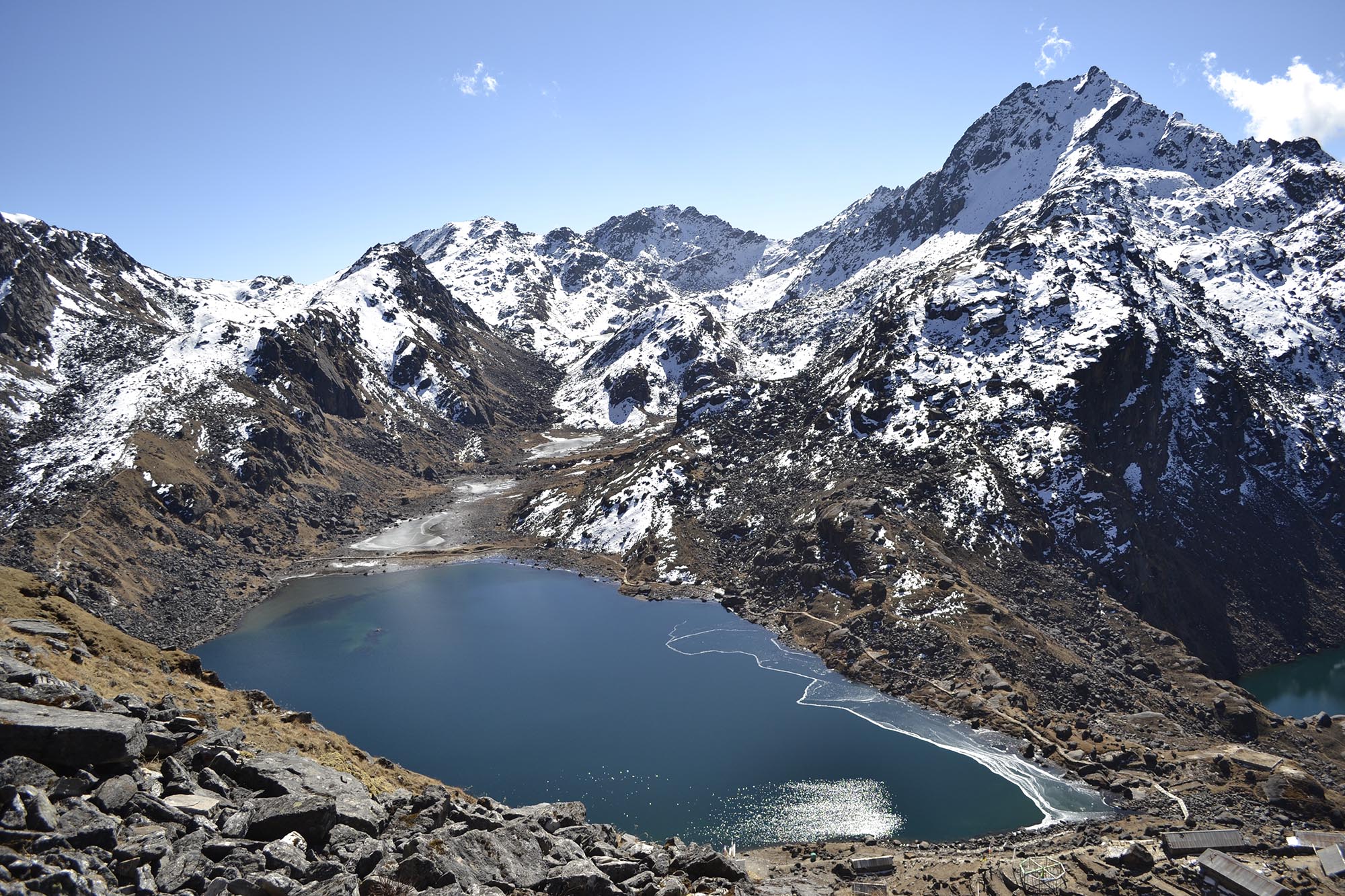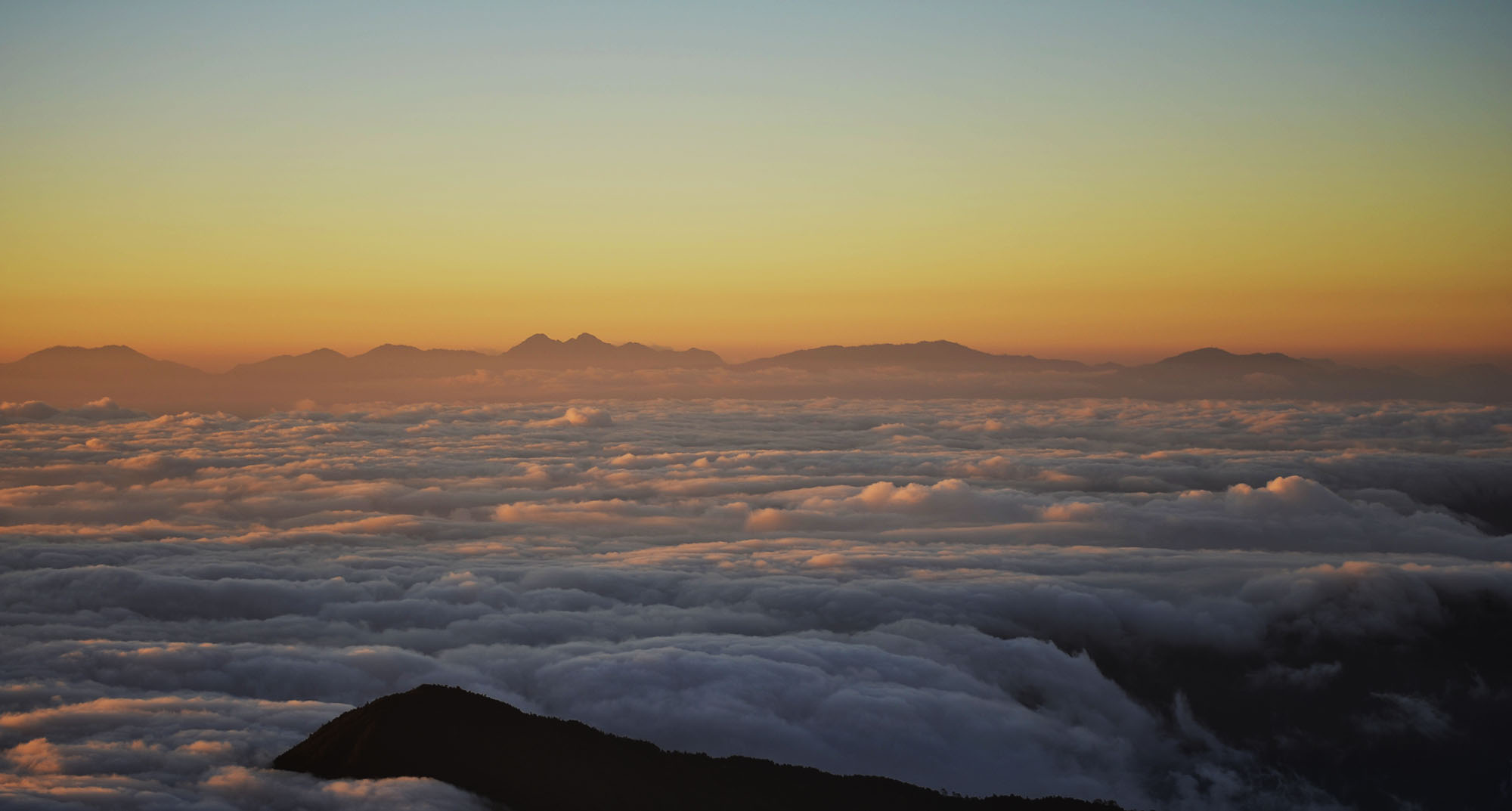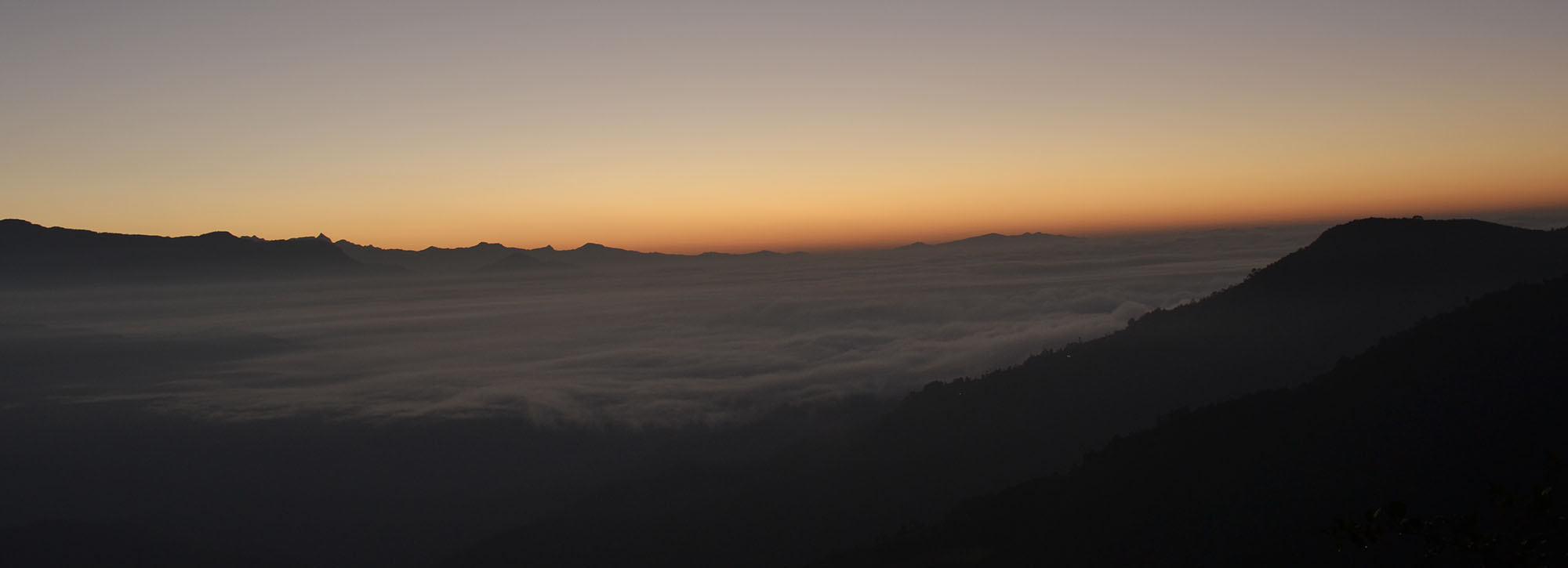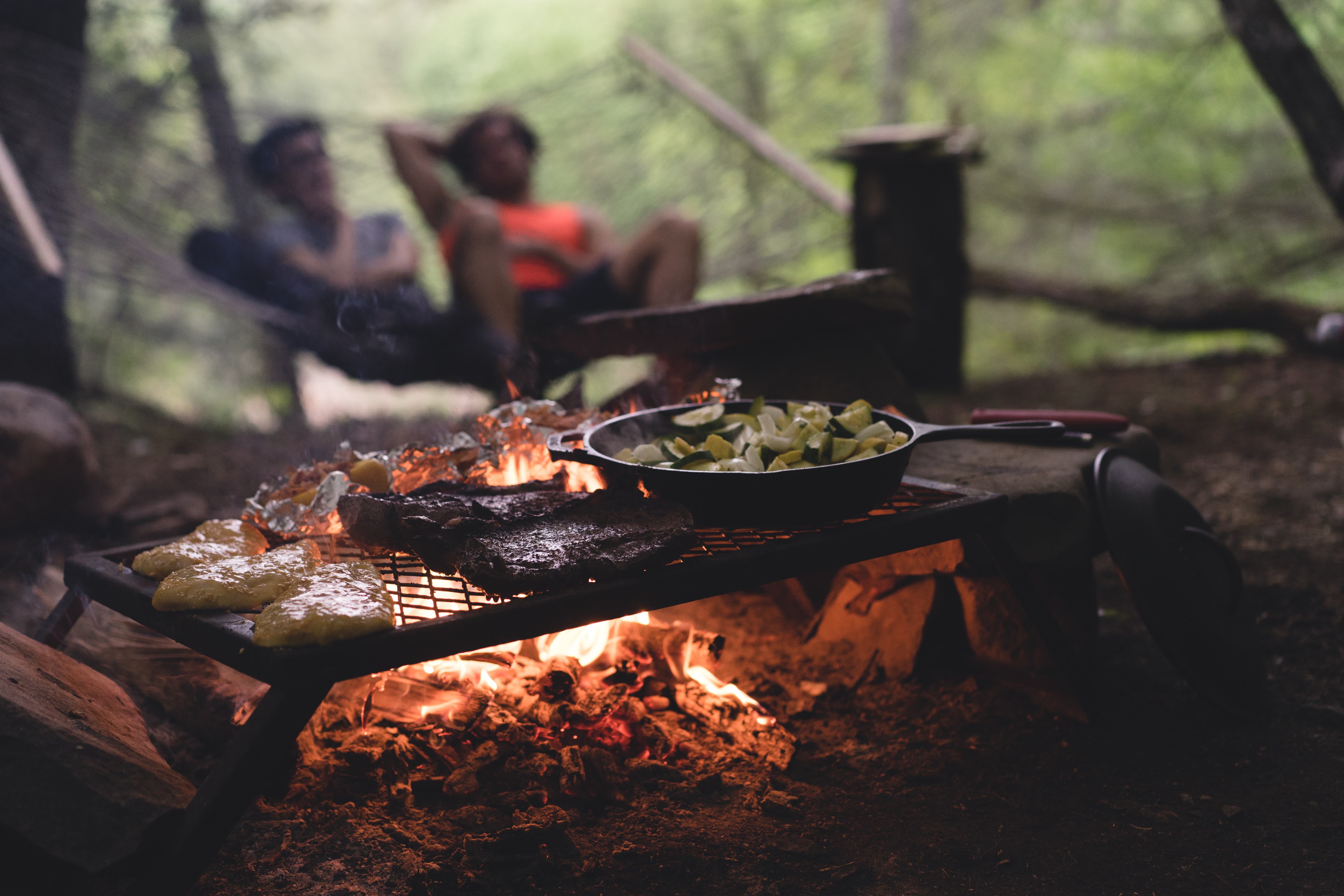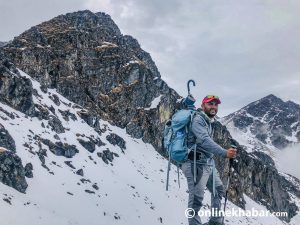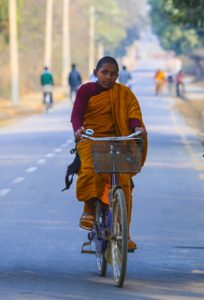The view from the terrace of the lodge made the hours of uphill climb and walking through dank, eerie forests worthwhile.
Golden and pink light moved across massive mountains like a silk scarf, lingering for moments but always slipping away as the sinking sun tugged at it from the other end. The sky was awash with fiery red and deep orange. Far, far away, where our destination lay, a solitary peak shone, an upturned canine gilded by, last light. And just like that the show was over. The landscape became the colour of ink. Stars appeared.
This was in Chisapani, the customary first night’s halt on the trek to the holy lake of Gosainkunda, trekking from the Sundarijal side. After a spectacle like that it was hard not to believe that something magical, whether religious or secular, lay on the other side of the mountains. Whether one was a pilgrim or simply a city-sick trekker, Gosainkunda rang of salvation.
Chisapani was also where one of my favourite raconteurs lived, a grandmother who ran a tea-house. I had first known her when trekking through the village years ago. She sold homemade alcohol and snacks, most of them made from the smoked buffalo meat hanging from her kitchen’s rafters. Her teashop was a social hub: trekkers, goat herders, villagers passing through all stopped for a glass of millet wine. Sometimes, like on that evening I visited her, she was alone. The only sound was her cackling radio, the loquacious accompaniment to the silence of her loneliness (she lived alone in the wooden house, her husband choosing to live with his second, younger wife).
The hut was exactly as I remembered, down to the bamboo ashtray and adobe hearth and soot-blackened rafters. Aama, as I called her, was the same, all giggles and teller of tall tales. She regaled us that evening with her childhood memory of seeing the Tibetan refugees who had followed the Dalai Lama out of Tibet. Her father had taken her to Tundikhel to see the strange people. “They pulled out black hunks from their gowns and bit off pieces and chewed. It was only when my father told me that I realized the pieces were dried meat.” After a wonderful meal of fried meat (her specialty), we walked back to the village, looking at the sky teeming with stars, pointing to familiar constellations.
At the end of the next day, an easy hike, we arrived in Golfubhanjhyang. There we checked into the Thodong Lama Lodge. Besides being a spotlessly clean lodge, it doubled as a rehabilitation center for those who’d been ripped off on trekking routes. When I inquired about the price it was so reasonable that it remains the only place on a trekking route ever where I didn’t even think about bargaining.
Our room, The Parasol Room, named after one of the eight sacred Buddhist symbols, contained two small beds and a table. On the table between the beds was a small basket with two little pieces of chocolate—on the house. The chocolates were undoubtedly the idea of Roman, the Swiss operator of the lodge. And the low price was down partly to the fact that he did the work of five people—taking orders, bringing food and drinks, carrying buckets of water to the toilet and shower room. He was a human version of the Swiss Army knife.
From Golfubhanjhyang onward traffic on the trail thinned to a trickle. Occasionally there was a large trekking group coming down the hill, led by guides, with cooks and camp helpers lagging behind. That was to be expected; we were going on a trek into the mountains in winter. I asked trekkers coming down if there was snow on the pass before Gosainkunda. There was, they said, but not enough to cause concern.
On the fourth day of the trek we arrived at the foot a flight of stairs that went up to a small bluff with a tiny settlement of lodges. This was Ghopte. As I stepped on the stairs, a sweet song drifted to me. It was a bewitching voice. I got to the top of the stairs and saw that the singer was a girl in her teens. She stopped as soon as she saw me. I had gone barely a hundred meters beyond Ghopte when I froze on the trail. It was a male Impeyan pheasant. I tried to reach for my camera and it flew down the mountain like an iridescent arrow.
That pheasant was a compensation for the lack of color that came after Ghopte. Almost without warning we crossed the treeline and arrived in lichen country. The only eye-catching life here was in the form of scurrying balls of fur: marmots. These rodents came out from their burrows to bask in the sun amongst boulders the size of small houses. Overhead, eagles wheeled; smaller birds flitted about. The landscape became increasingly emptier, quieter and rockier. And we were higher. It felt like the mind was slowly being stripped of the trivialities that fill it at lower altitudes. Pilgrims and non-pilgrims alike were bound to feel something special was close.
Pilgrimages in the Himalayas are synonymous with tribulations, and that is part of their appeal. Our test came at the Surya Kunda Pass. The harmless (according to my informers) snow had melted, then frozen solid by the wind; the trail was an ice skating rink. Inching along, making detours to find rocks sticking out of the ice, we made it down to Gosainkunda in four hours—a distance that takes forty minutes when the trail is free of ice. We hardly noticed the stunning mountains that stood like sentinels on the horizon or the sacred lake at the bottom of an amphitheater on our way down.
The sacred lake became more than just a beautiful body of water for us. We were relieved and grateful for arriving on its shore without getting hurt. That and the beauty of the place brought a prayer of gratitude to our lips. Both a pilgrimage and a trek involve going through wonderful and trying places. But it is the corners of our inner landscape that they sometimes take us to that we remember longest.
Checklist
Post-Earthquake Trekking to Gosainkunda

The April 2015 earthquake badly damaged sections of the trekking trail from Sundarijal to Gosainkunda. As a result parts of this route are hazardous. It is best to avoid taking this route unless there is assurance from experienced trekking guide who has been on the trail after the quake. Trekking up from Dhunche, the district headquarters of Rasuwa, is the safer (and shorter) option.
Essentials for the Trek

National Park Permit and TIMS Card
Gosainkunda lies in Langtang National Park, so visitors need to pay an entry fee for the park. This can be done – and is recommended that it be done – at the Nepal Tourism Board office in Kathmandu. There have been cases of national park employees asking for double the entry fee at the national park’s entry points in Langtang. Officials in Kathmandu assure you that this overcharging is illegitimate, but it’s better to be on the safe side and pay the entry fee in Kathmandu. Non-Nepalis also need to have a Trekking Information Management System (TIMS) card in Kathmandu. It’s available at the Trekking Agencies’ Association of Nepal (TAAN) office. Carry these cards and receipts with you until the end of your trek.
***
More from the author
Silhouettes and Silence in Nepal’s Begnas Lake
Bardia National Park: A Lullaby of Crunching Bones
Khaptad: A banquet for the senses



